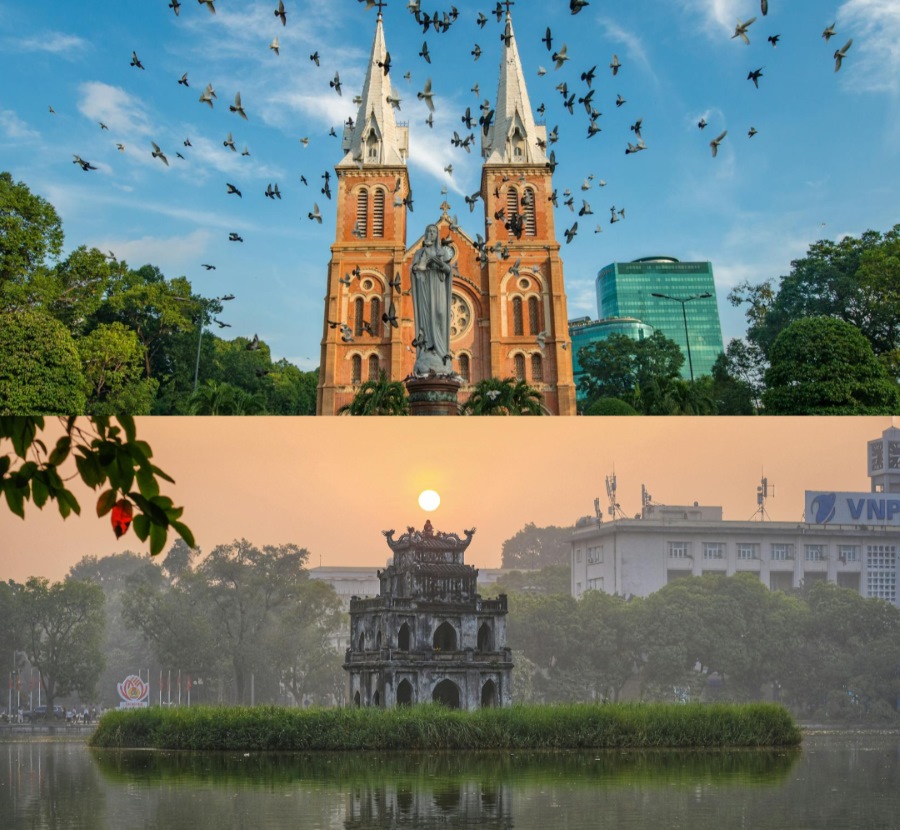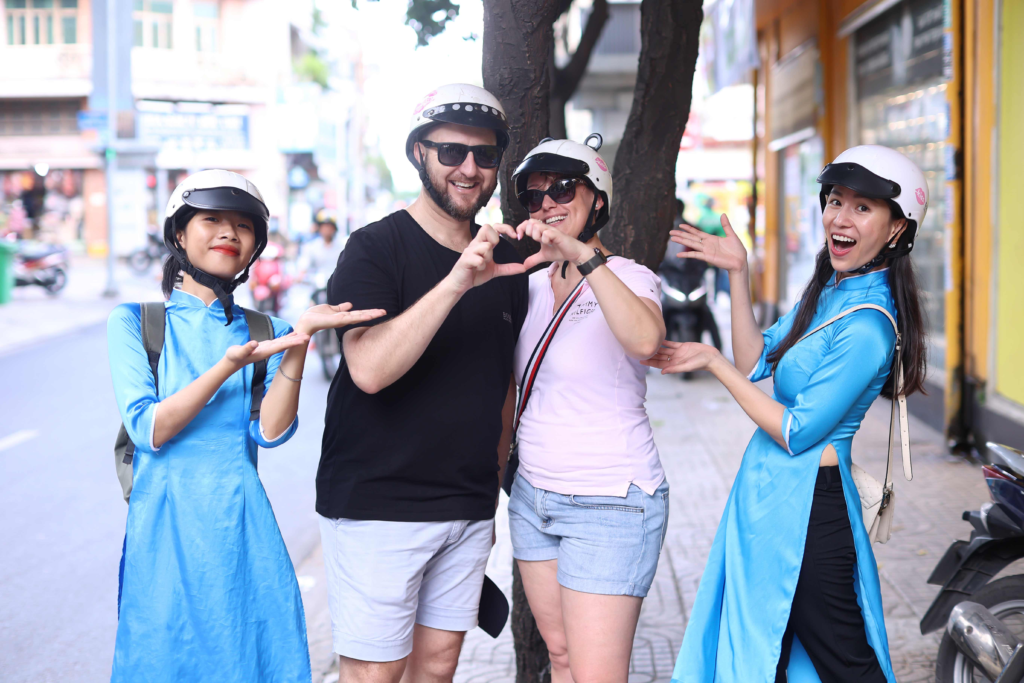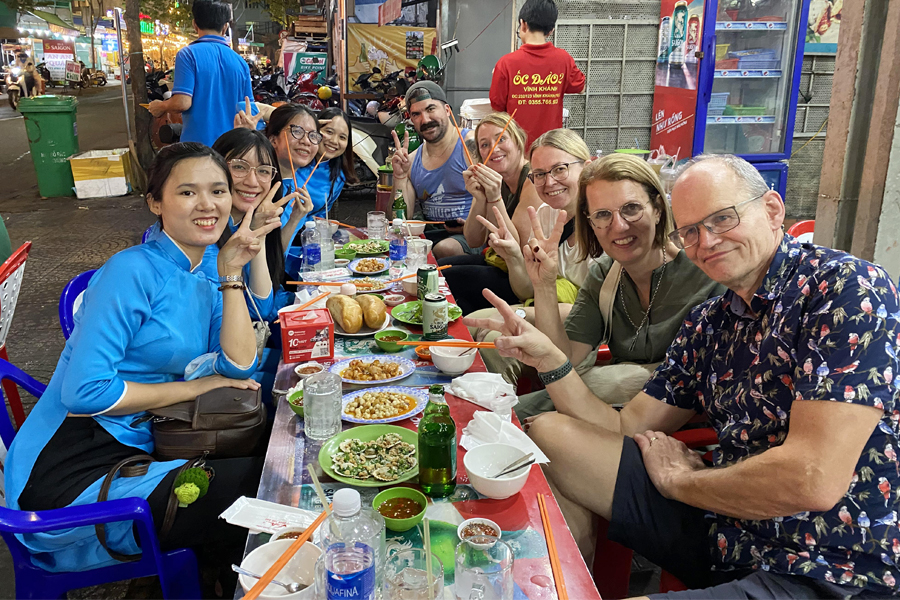When mentioning Vietnam, Hanoi and Ho Chi Minh City are the two names that ring the bell in people’s minds. While Hanoi and Ho Chi Minh City are both known as vibrant cities with rich histories, they offer distinct cultural experiences.
Beyond the obvious differences in size and pace of life, there are subtle distinctions that may surprise first-time visitors. From the laid-back charm of Hanoi to the bustling energy of Ho Chi Minh City, these two cities offer unique insights into Vietnamese culture.
Open
7:00 PM - 9:00 PM
Address
123 Nguyen Hue Street, District 1, Ho Chi Minh City, Vietnam
Type of place
Restaurant
Price range
$4 - $12
Note
Enjoying a meal at a street food stall in Vietnam is a delightful experience.
Historical Background Difference Between Hanoi and Ho Chi Minh City Culture
With Vietnam’s two most prominent cities, the first difference between Hanoi and Ho Chi Minh City can be seen through the unique historical background and cultural identity.
As the capital of Vietnam, Hanoi boasts a rich history that spans over a thousand years. Originally founded in 1010 under the name Thang Long, Hanoi is known for its deep-rooted traditions, ancient architecture, and significance as the political and cultural heart of Vietnam.

The Old Quarter, with its narrow alleyways and historical buildings, reflects centuries of Vietnamese architecture and tradition. During the French colonial period in the 19th century, Hanoi witnessed significant changes, with the development of wide streets, colonial buildings, and landmarks that remain today, blending Vietnamese and French influences together.
In contrast, Ho Chi Minh City, formerly known as Saigon, is a growing metropolis that serves as Vietnam’s economic and financial hub. It has a more modern, cosmopolitan vibe, with skyscrapers, a thriving economy, and an active nightlife.

The history of Saigon has a deep connection to the American War (Vietnam War), particularly in the 1960s and 1970s, when it served as South Vietnam’s capital. The conflict had a profound impact, as seen on historical sites such as the War Remnants Museum and Cu Chi Tunnels.
After the war, it was renamed Ho Chi Minh City, but the area still has a distinct cultural identity that combines Vietnamese tradition with modern and international influences.
>>> Read more: Is It “Saigon” Or “Ho Chi Minh” City? A Tale Of Two Names
Cultural Difference Between Hanoi and Ho Chi Minh City – The Pace of Life
The pace of life is another difference between Hanoi and Ho Chi Minh City , which is one of the first things visitors notice.
In Hanoi, life goes on at a slower, more relaxed speed. The capital’s residents often take time to enjoy life’s small moments, whether it’s a quiet coffee at a traditional café, a walk around Hoan Kiem Lake, or a visit to a local market. The city’s historic architecture, tree-lined streets, and tranquil lakes give it a calm, almost timeless feel.

Ho Chi Minh City, on the other hand, has a much faster, more dynamic rhythm. The streets are alive with a nonstop flow of motorbikes, bustling markets, and busy sidewalks as people go about their day.

Known as the country’s economic hub, Ho Chi Minh City attracts young professionals, entrepreneurs, and international businesses, fueling an atmosphere of ambition and modernity. Here, life is all about momentum, with new restaurants, shops, and events constantly appearing out of nowhere.
Culture and Lifestyle in Hanoi vs Ho Chi Minh City
Hanoi and Ho Chi Minh City, despite being part of the same country, exhibit different cultural distinctions.
Hanoi, the nation’s historic capital, is run deep in traditional values. Many residents uphold longstanding customs, and daily life reflects a sense of continuity with the past.

They often prioritize family values, and respect for elders and social interactions tend to be more formal, with a strong focus on politeness and etiquette.
In contrast, Ho Chi Minh City, a bustling metropolis, embraces a more modern and open-minded lifestyle. The city’s exposure to Western culture has led to a more relaxed and informal social atmosphere.
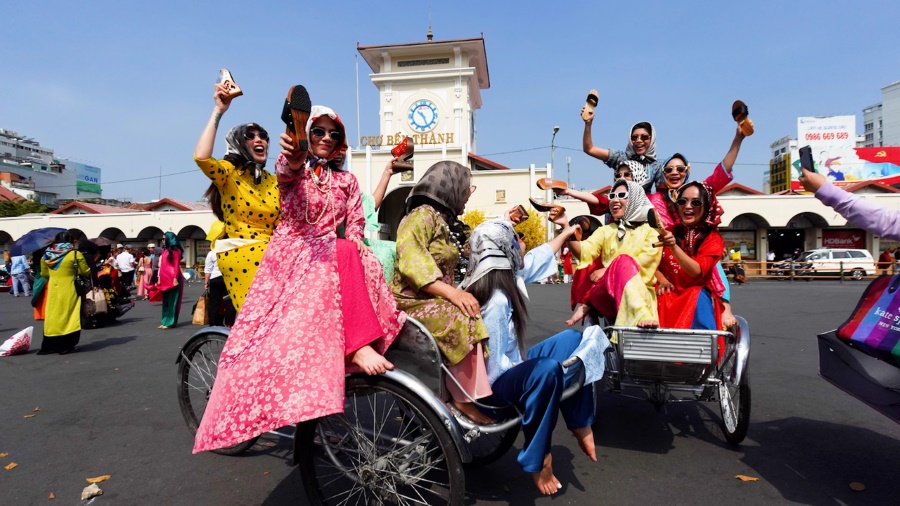
People are generally more outgoing, open to new experiences, and adopt less formal greetings and a more flexible approach to hospitality. However, that does not mean that traditional values are forgotten here, they still lie among all the new experiences..
>>> Read more: Best Way to Travel from Hanoi to Ho Chi Minh
Differences in Cuisine Culture Between Hanoi and Ho Chi Minh City
Another difference between Hanoi and Ho Chi Minh City is the food culture. While both Hanoi and Ho Chi Minh City offer delicious and diverse culinary experiences, their distinct regional flavors and preferences set them apart.

Hanoi is well-known for its refined and delicate cuisine. Dishes like Pho, Bun Cha, and Banh Mi have become one with the city.
Hanoi’s Culinary Style
- Subtle Flavors: Hanoi’s cuisine is known for its delicate and subtle flavors.
- Fresh Ingredients: The city prioritizes fresh, locally sourced ingredients.
- Clear Broths: Soups, like Pho, often feature clear, aromatic broths.
- Less Sweetness: Hanoi dishes tend to be less sweet compared to those in Saigon.
In contrast, Ho Chi Minh City boasts a diverse and vibrant culinary landscape. Influenced by Chinese and French cuisine, the city offers a wide array of dishes, from street food to fine dining.
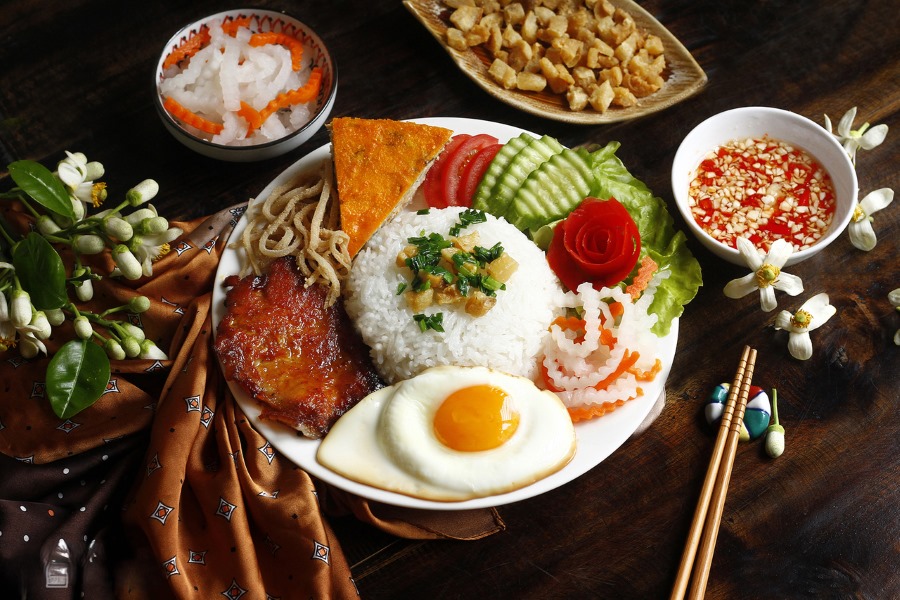
Ho Chi Minh City’s Culinary Style:
- Bold Flavors: Saigon’s cuisine is characterized by bold and intense flavors like chili.
- Sweet and Savory: Dishes often incorporate a balance of sweet and savory elements.
- Rich Broths: Soups, such as Bun Bo Hue, feature-rich, flavorful broths.
- Diverse Influences: The city’s cuisine is influenced by Chinese and French culinary traditions.
>>> Read more: Vietnamese Cuisine Culture – The Essence in Every Dish
Language and Dialects
While Vietnamese is the official language spoken throughout the country, regional dialects can significantly influence pronunciation, intonation, and vocabulary. The difference between Hanoi and Ho Chi Minh City dialects is a notable example of these regional variations.
The Hanoi dialect, often considered the standard Vietnamese dialect, is characterized by its distinct pronunciation and tone patterns. It is widely used in media, education, and government, making it the most recognizable and widely understood.
The pronunciation in Hanoi is clear and precise, with tones and sounds that align with formal Vietnamese language rules, giving it a reputation for being the most “standard” Vietnamese accent.
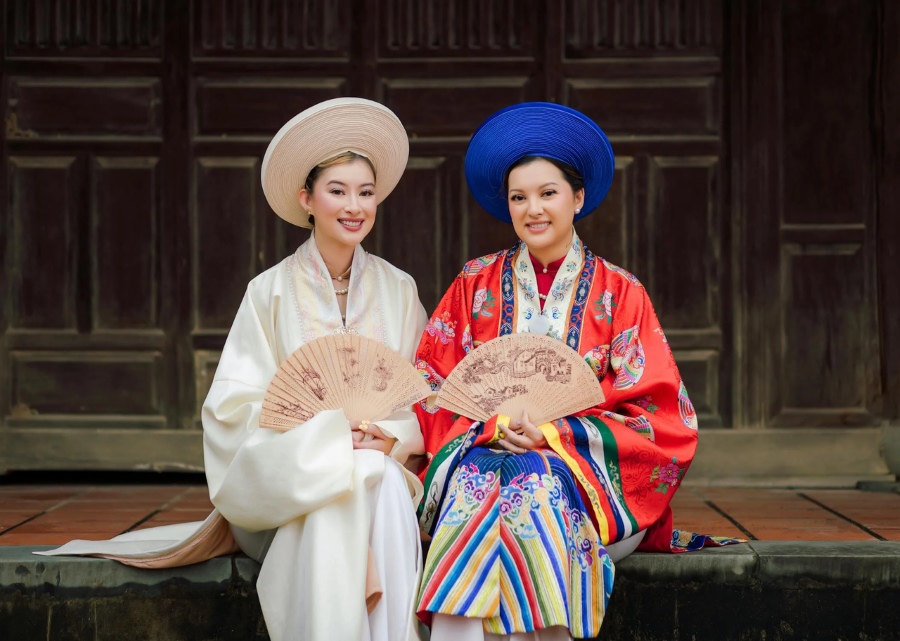
On the other hand, the Southern dialect, predominantly spoken in Ho Chi Minh City and the surrounding regions, has a unique accent and vocabulary. While it may sound different from the Hanoi dialect, it is still mutually intelligible.
The Southern dialect is often described as being more melodic and expressive, with a distinctive intonation. This dialect has a softer, sometimes faster rhythm, and often simplifies certain sounds, which gives it a warm, approachable feel to many listeners. The Southern dialect reflects the informal, open-minded character of Ho Chi Minh City, adding to the rich linguistic landscape of Vietnam.
Finally,
Both Hanoi and Ho Chi Minh City offer unique and unforgettable experiences. Whether you prefer the serene beauty of Hanoi or the vibrant energy of Ho Chi Minh City, a visit to either city will provide a fascinating glimpse into Vietnamese culture and history.
